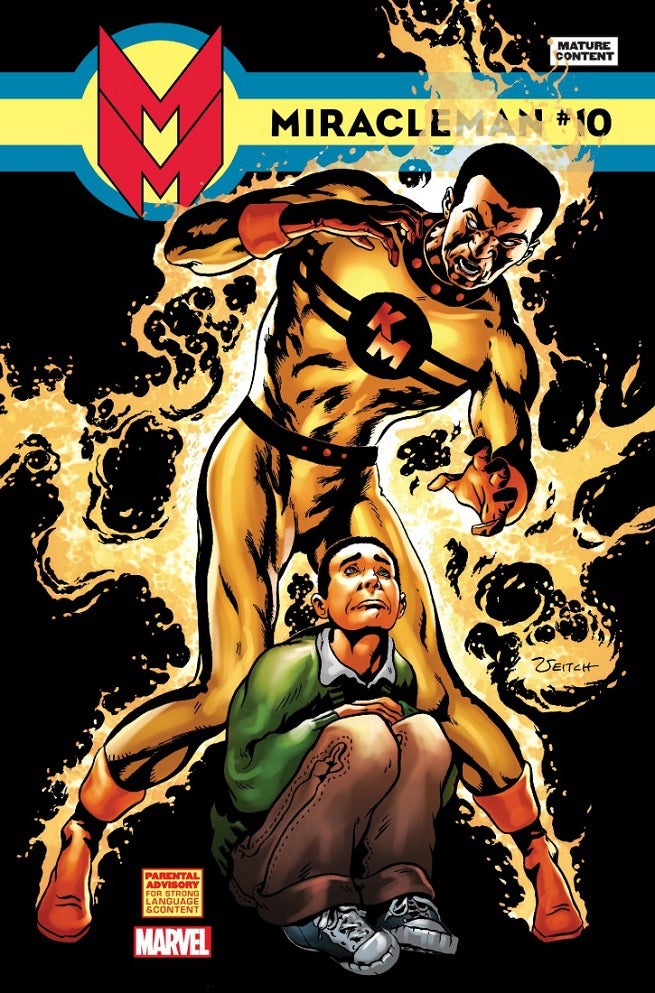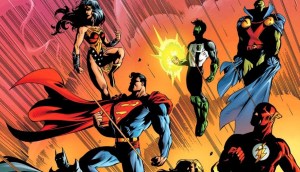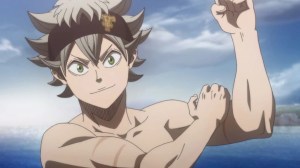
All that being said, the utterance of “Holy Macaroni…” above was intended to convey my reaction to the less than stellar art of this particular issue of Miracleman. I’m starting with the art first and foremost because it is what stood out to me more than anything. Frankly, Veitch’s work here is thoroughly underwhelming, appearing sketchy and ill-defined with imprecise linework and at times questionable facial expressions. Really, the art wouldn’t be nearly as disappointing if this series hadn’t previously featured the artwork of the immensely talented Garry Leach followed by the work of Alan Davis improving right before the reader’s eyes into something truly memorable, and the stiff but undeniably competent work of Chuck Austen. Taken on its own merits Veitch’s work is decent if unexciting but comparing him to his predecessors on this book is where he really suffers.
Videos by ComicBook.com
Oddly enough the modern recoloring which throughout the reprints has been done by Steve Oliff feels a bit less polished in this issue as well, perhaps simply as a consequence of the artwork he is attempting to complement. It’s also worth noting that the colors of the text boxes belonging to the two psychic sibling characters are rather jarring shades of green and purple which tend not to mesh well with the surrounding artwork. I would think that more subtle tones would have been advisable here.
Getting back to the artwork itself, I certainly don’t want anyone to think that Veitch’s work is without its good points. His panel layouts are intriguing and in general his visual storytelling is well-conceived if not impressively executed. In particular, I quite enjoy the two pages wherein Johnny Bates confronts Kid Miracleman and actually speaks with his nurse. The way the panel structure mirrors itself one page to the next is quite excellent. Also, the scene just before Miracleman changes back into Mike Moran which shows him running across an ocean carrying a jeep and disturbing the belongings of a heavyset swimmer in flashback while he speaks with Liz is nicely done and injects some appreciated levity into the proceedings. Knowing the skill which Veitch currently possesses and having seen Alan Davis’ improvement over several issues of Miracleman, I don’t know that I’d mind seeing him continue on this series. That being said, the cover of the next issue suggests that John Totleben may be taking over on art duties and if this is the case, I can’t say that I will be disappointed.
Turning to the writing, Alan “The Original Writer” Moore (if he ever takes up boxing, I think that’s how he should be announced) is still providing excellent work in this issue. More than anything, this issue is building up suspense for future entries in the series and I cannot wait to see where all of this is leading to, remembering that this is the first time I’m reading this series. Perhaps the most intriguing development is the number of hints at the existence of a female counterpart to Miracleman, a “Miraclegirl” or “Miraclewoman” or sorts. Frankly, Moore does an excellent job of hinting at her and building the suspense for her ultimate reveal. From glimpses of red and yellow high heeled boots in the limbo dimension where transformation counterparts are kept, to a single panel showing an attractive blonde woman presumably located in this limbo, to a scene where a Doctor McCarthy (real name being Lear) says something starting with “Kim” and explodes from her office taking out a wall, the only conclusion seems to be that the reader will soon see this female Miracleman add to the complications of this series.
Three other items which only whet my appetite for future issues of Miracleman are the presence of the psychic siblings, Kid Miracleman’s trickery, and the fantastic attributes of Winter Moran. The siblings who seem to be targeting super-beings do themselves possess at least some of the twinkly aura that Miracleman gives off and are capable of some form of transformation. As such, I cannot wait to see what part they ultimately play in this evolving narrative. Kid Miracleman seems to have worked some reverse psychology on Bates which I can only guess will lead to his ultimate release. As for Winter Moran, being the daughter of Miracleman, I fully expect that she has some form of super powers which will impact the story moving forward. All of this makes for remarkably stimulating reading and it is all weaved together in a way that never feels disjointed or rushed. Really Moore’s writing in general is masterful here with nary a word out of place or out of character.
This is certainly not a complaint but this issue does contain a number of references that make the book slightly dated and slightly British. Again, this is not problematic but references to the National Health Service, Margaret Thatcher, and the IRA do make this feel like a book written by an Englishman during the 1980s. In particular, Dr. McCarthy’s presumed explosive transformation and her secretary’s jumping to blame the Irish Republican Army partly on the basis of the doctor’s assumed last name is a reference that younger readers are less likely to understand and more likely to scratch their heads at given that it would seem to have more potential bearing on the plot, not that it will likely prove to. At any rate, Moore’s writing continues to entertain and enthrall. It’s only a shame that he couldn’t bring himself to get onboard with this reprint series.
This brings me to the back matter of this issue… It’s rather frustrating to continue beating this particular dead horse but the printing of original inks and pencils for this series has ceased to be interesting to me in any way whatsoever, particularly as the artwork in this issue was only a bit more than serviceable anyway. I certainly didn’t need 23 pages of original artwork to get whatever point or effect they were intended to convey. Another 23 pages of story or (time for another dead horse) a text piece contextualizing the original work would have been preferable in the extreme. Aside from giving too much in the way of original art, this issue was stingy with the Marvelman reprints. Given the choice between original art and Marvelman reprints, I’ll take the reprints and to only get four pages of them here is doubly frustrating. This is further compounded by the fact that the reprint has no connection thematic or otherwise to the content of the issue. It is part two in a multi-part story of which I do not believe that we have not been given the first part and it features Gargunza who in the Miracleman narrative is dead at this point. If Marvel thinks that the $4.99 price of the issues of this series is justified by the many pages of back matter, then all I can say is that I would gladly pay that price if the back matter was more interesting/varied or would prefer to have much of it excised in favor of a $3.99 price.
Regardless of my complaints, I cannot say that I was unsatisfied with this issue. The Miracleman story is an excellent one and reading it in serialized form has been a remarkable experience. I truly recommend it to anyone interested in this series. I continue to look forward to future issues and developments. Hopefully next issue though I’ll be able to lead off with an excited “Holy Macaroni!” rather than a midly miffed one.









